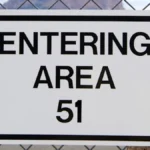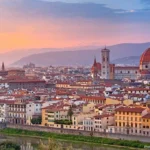
Welcome to the vibrant city of Seoul, where tradition and modernity converge to create a dynamic tapestry of history, innovation, and cultural richness. As the capital of South Korea, Seoul stands as a testament to the resilience and evolution of a nation over the span of more than 600 years. From its foundation in 1394 as the capital of the Joseon Dynasty to its current status as a global economic and technological hub, Seoul has woven together a narrative of growth, transformation, and global influence. Join us as we delve into 25 historical facts and numerical trivia, exploring the facets that make Seoul a captivating blend of the ancient and the contemporary.
Foundation Date: Seoul, established officially as the capital of the Joseon Dynasty in 1394, holds a historical significance that spans over six centuries. Initially named Hanyang, the city served as the political and cultural center of Korea, witnessing the rise and fall of dynasties, invasions, and immense societal changes.
Population Growth: With a population exceeding 9.7 million as of 2022, Seoul has evolved into a sprawling metropolis, pulsating with energy and diversity. Its demographic growth reflects a convergence of tradition and modernity, as the city remains deeply rooted in its historical heritage while embracing the waves of globalization.
Expansion: Seoul’s physical expansion is a testament to its resilience and adaptability. From a mere 49 square kilometers in 1945, the city has expanded its boundaries to encompass approximately 605 square kilometers by 2022, accommodating the ever-growing needs of its population and fostering urban development.
Elevation: Nestled at an average elevation of 38 meters above sea level, Seoul’s topography has played a role in shaping its architectural landscape and urban planning. The city’s elevation, while modest, adds a subtle dimension to its geography, influencing factors such as climate, water flow, and the panoramic views from its elevated landmarks.
Seoul’s 600-Year History: Seoul’s enduring history spans more than six centuries, during which it has weathered the tides of time. As the capital of Korea, Seoul has been witness to the cultural renaissance of the Joseon Dynasty, the trials of Japanese invasions, and the socio-political transformations that have defined the nation.
Gyeongbokgung Palace: Gyeongbokgung, constructed in 1395, stands as an architectural marvel and a symbol of royal grandeur. As the largest among the Five Grand Palaces, it served as the main royal palace of the Joseon Dynasty, reflecting the dynasty’s commitment to grandiose aesthetics and cultural refinement.
Hangul Creation: King Sejong the Great’s creation of Hangul in 1443 marked a pivotal moment in Korean cultural history. The invention of an easily learnable and accessible script aimed at increasing literacy among commoners reflects the monarchy’s commitment to egalitarian principles and the empowerment of the people through education.
Invasion by Japan: Seoul’s history bears the scars of the late 16th-century Japanese invasions when the city suffered significant damage. The remnants of this tumultuous period can still be seen in historical sites and artifacts, serving as a poignant reminder of the resilience of the Korean people.
Japanese Occupation: The period of Japanese occupation from 1910 to 1945 left an indelible mark on Seoul’s cultural and social fabric. The city became a focal point of resistance, and the scars of this era persist in the collective memory, influencing modern South Korea’s commitment to independence and sovereignty.
Korean War: The Korean War (1950-1953) left an indelible mark on Seoul’s landscape. The city changed hands four times during the conflict, enduring significant destruction. The scars of war, juxtaposed with the subsequent rapid economic growth, exemplify Seoul’s phoenix-like ability to rise from adversity and rebuild.
Industrialization: Seoul’s transformation into a global economic hub during the 20th century is a testament to South Korea’s rapid industrialization. The city’s skyline, once dominated by traditional architecture, now features towering skyscrapers and technological marvels, symbolizing the country’s leap into the ranks of advanced economies. The industrial boom fueled unprecedented urbanization and prosperity.
Seoul Olympics: The hosting of the Summer Olympics in Seoul in 1988 marked a defining moment in the city’s modern history. The global event showcased South Korea’s economic prowess and technological advancements to the world, leaving an enduring legacy of international recognition and infrastructure development.
Population Density: Seoul’s status as one of the most densely populated cities globally underscores the challenges and vibrancy of urban living. With over 16,000 people per square kilometer, the city epitomizes the hustle and bustle of modern metropolises, where tradition intertwines with the fast-paced demands of contemporary life.
Incheon International Airport: Opened in 2001, Incheon International Airport has become a key gateway to South Korea and a major hub in East Asia. Its cutting-edge facilities and efficient operations reflect Seoul’s commitment to providing a world-class travel experience, connecting the city to a global network of destinations.
Namsan Seoul Tower: Standing at 236.7 meters, Namsan Seoul Tower is an iconic symbol of the city’s skyline. Built in 1969, it not only offers breathtaking panoramic views but also represents Seoul’s commitment to blending modernity with its natural surroundings, as the tower is situated on Namsan Mountain.
Tech Hub: Seoul’s status as a global technology hub is exemplified by the presence of tech giants like Samsung and LG. The city’s innovation and technological advancements have played a pivotal role in shaping the digital landscape of the 21st century, influencing industries worldwide.
Gangnam District: Made internationally famous by Psy’s “Gangnam Style,” this affluent district is a microcosm of South Korea’s economic success. Its upscale shopping centers, luxury residences, and vibrant nightlife symbolize Seoul’s transition from an agrarian society to a leader in technology and commerce.
Ewha Womans University: Founded in 1886, Ewha Womans University stands as a beacon of women’s education globally. The institution’s commitment to providing quality education to women has empowered generations, contributing significantly to the cultural and intellectual landscape of Seoul.
Bukhansan National Park: Offering a sanctuary of natural beauty, Bukhansan National Park is a haven for outdoor enthusiasts within Seoul’s reach. The park’s lush landscapes, hiking trails, and historical sites provide a serene contrast to the bustling urban life, showcasing the city’s commitment to preserving its natural heritage.
Seoul Metro: The Seoul Metropolitan Subway stands as a testament to the city’s efficient public transportation system. One of the busiest and most extensive metro networks globally, it facilitates the seamless movement of millions daily, reflecting Seoul’s commitment to sustainable urban development and connectivity.
Han River: The Han River, flowing through the heart of Seoul, is more than just a geographical feature; it’s a cultural and recreational lifeline. Providing a scenic backdrop to the city, the riverbanks serve as popular spaces for leisure activities, picnics, and festivals, fostering a sense of community and connection to nature amidst the urban landscape.
Myeongdong: Myeongdong, a bustling shopping district, epitomizes Seoul’s vibrant and eclectic urban culture. Lined with trendy boutiques, international brands, and street food stalls, Myeongdong reflects the city’s dynamic fusion of tradition and modernity, drawing locals and tourists alike to its lively streets.
K-Pop Influence: Seoul’s influence on the global entertainment scene is epitomized by the phenomenon of K-Pop. Birthed in the city’s vibrant music scene, K-Pop has become a cultural juggernaut, with groups like BTS and BLACKPINK achieving international acclaim, showcasing Seoul as a trendsetter in the world of music and entertainment.
Gangnam Style’s Popularity: Psy’s “Gangnam Style” became a global sensation in 2012, making Seoul a household name worldwide. The music video’s unprecedented success on YouTube, being the first to reach one billion views, catapulted both Psy and Seoul into the international spotlight, highlighting the city’s cultural influence on a global scale.
Smart City Initiatives: Seoul’s commitment to technological advancement is evident in its implementation of smart city initiatives. From free public Wi-Fi to smart transportation systems, the city is at the forefront of using technology to enhance urban living. These initiatives not only improve efficiency but also showcase Seoul as a model for other cities striving for innovation and sustainability in the digital age.
Seoul FAQs: Unveiling the Heart of South Korea
Seoul, the vibrant capital of South Korea, is a captivating metropolis that seamlessly blends ancient traditions with cutting-edge technology. Here are some of the most common questions people have about Seoul:
1. What is the best time to visit Seoul?
Seoul is a great destination year-round, but the best time to visit depends on your preferences:
- Spring (March-May): Pleasant weather with blooming cherry blossoms, perfect for exploring palaces and gardens.
- Summer (June-August): Hot and humid, but perfect for festivals and enjoying water activities.
- Autumn (September-November): Comfortable temperatures with beautiful fall foliage, ideal for outdoor activities.
- Winter (December-February): Cold with occasional snowfall, great for winter sports and experiencing festive lights and decorations.
2. How do I get around Seoul?
Seoul has an extensive and efficient public transportation system, making it easy to get around. Here are your options:
- Subway: The Seoul Metropolitan Subway is a fast and affordable way to travel across the city. Maps and signage are available in English.
- Bus: Seoul has a well-developed bus network, reaching areas not easily accessible by subway. However, navigating buses can be more challenging for non-Korean speakers.
- Taxi: Taxis are readily available and relatively affordable, especially when shared by multiple people. Having basic Korean phrases or your destination written down in Korean can be helpful.
3. What are some must-see attractions in Seoul?
Seoul boasts a wealth of historical and cultural attractions, alongside modern marvels. Here are a few highlights:
- Gyeongbokgung Palace: The largest of the five royal Joseon palaces, offering a glimpse into Korean royal life.
- Bukchon Hanok Village: A charming neighborhood with traditional Korean houses (hanoks) and narrow alleyways.
- Insadong: A vibrant district known for its traditional shops, tea houses, and street food.
- N Seoul Tower: Offering panoramic views of the city from the top of Namsan Mountain.
- Myeongdong: A bustling shopping district with a wide variety of shops, restaurants, and street performers.
- Gwangjang Market: A traditional market known for its delicious street food and local specialties.
4. What kind of food should I try in Seoul?
Korean cuisine is a delicious and flavorful experience. Here are some must-try dishes:
- Korean BBQ: Cook your choice of meats and vegetables right at your table on a built-in grill.
- Bibimbap: A colorful rice bowl with assorted vegetables, meat, and a fried egg.
- Kimchi: A staple fermented side dish made from spiced cabbage. There are many varieties!
- Bulgogi: Marinated grilled beef, often served with lettuce wraps.
- Tteokbokki: Spicy stir-fried rice cakes, a popular street food.
- Sundubu Jjigae: Soft tofu stew, a comforting and flavorful dish.
5. How much does it cost to travel to Seoul?
The cost of your trip will depend on your travel style and preferences. Seoul can be a budget-friendly destination, especially compared to other major cities. Here’s a breakdown of some average costs:
- Accommodation: Budget hostels can be found for around $20-30 USD per night, while mid-range hotels start around $50-70 USD per night.
- Food: Street food is very affordable, with meals costing around $5-10 USD. Restaurant meals can range from $10-20 USD to $50+ USD depending on the type of cuisine and location.
- Transportation: A T-money card for public transportation is convenient and refillable. Costs vary depending on the distance traveled, but most trips are under $2 USD.
6. Is Seoul a safe city to visit?
Seoul is generally considered a very safe city for tourists. Violent crime is rare, and petty theft is the most common concern. However, it’s always wise to be aware of your surroundings and take precautions with your belongings, just like in any other major city.









